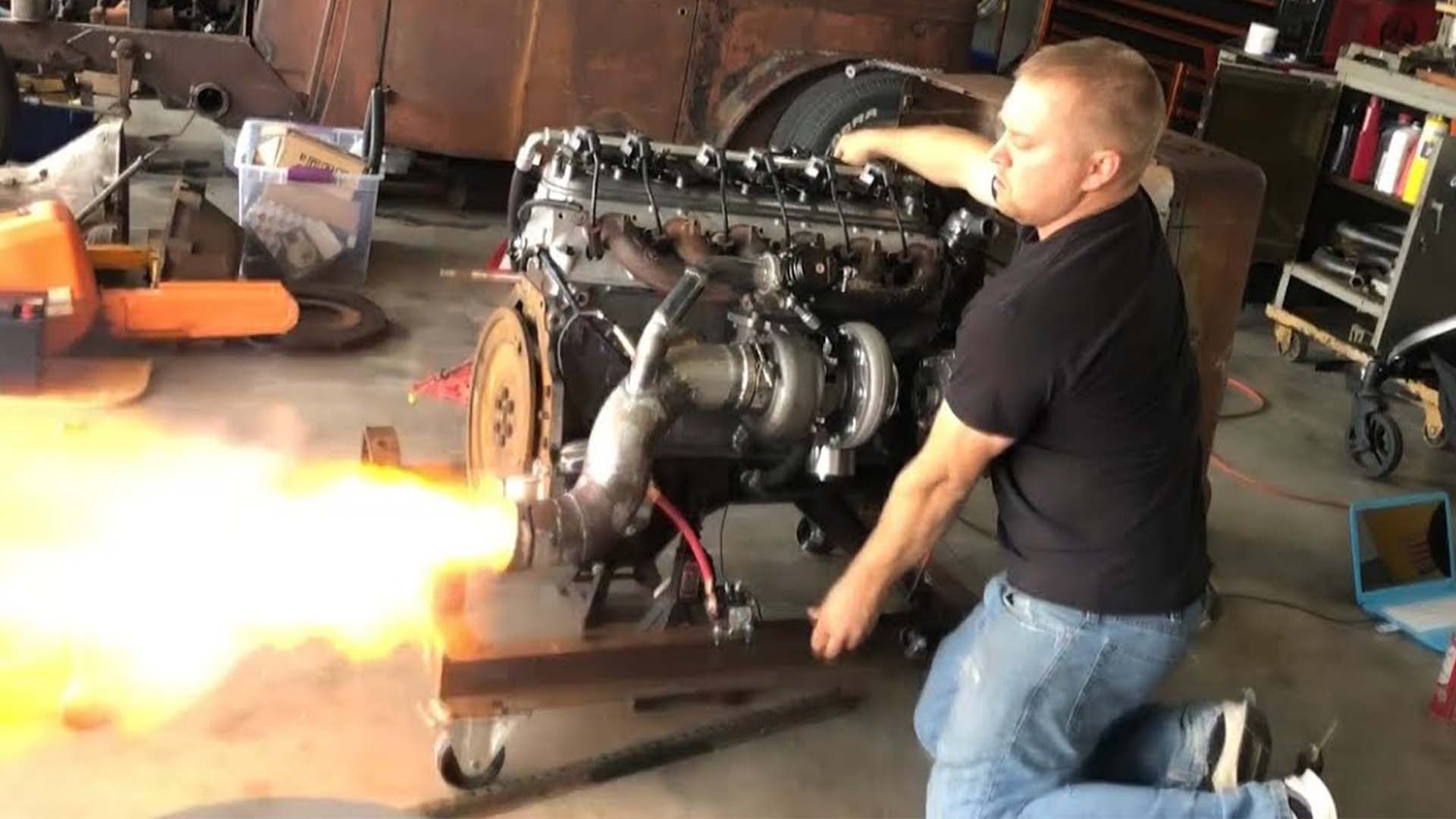

General Motors’ LS V8s are beyond commonplace in the car nut universe. People swap them into everything—Porsches included—and while they’re the quickest way to impress on a dyno, they aren’t exactly groundbreaking. That’s part of why Jaron Nelson decided to turbocharge a Ford 300 inline-six and make it his own by modifying a set of LS heads to fit.
Now, Nelson isn’t the first to do this, but I’d wager that his engine build is the most complex of the class. It’s taken between two and three years of his free time to build, but unless you know what you’re doing, this type of swap is all but impossible. Boost makes it even trickier, but finally, Nelson’s engine is running with a laundry list of innovative mods to make it all happen.
“The motor itself is more generic than a person thinks,” Nelson says, underselling it by a lot. “It’s stock bore. It has stock pistons, crank, and rods. It has two #241 Camaro [LS1] cylinder heads welded together.”



While there’s some aftermarket support for the Ford 300, there are key factors that limit the engine’s performance numbers. Nelson identifies the cylinder head as problem numero uno. The stock unit doesn’t flow nearly enough to support his power goals, and neither do the handful of ready-made solutions.
Nelson is using his LS expertise to solve this equation which includes an engine he bought off his father-in-law, a GT45 turbo that cost him $163, and a ton of spare GM parts he had lying around his shop. He tells me he’s about $1,500 into the project, but you can’t underestimate the amount of time it’s taken to get everything working right. He’s also uploaded in-depth explainers to his YouTube channel, Piston Ranch.

Nelson had read about old-time drag racers fitting V8 heads to inline engines in the past, but their method was pretty archaic in comparison. They epoxied the cylinder heads together and ran a trio of Weber carburetors, which resulted in solid power, all things considered. Still, they ran into cooling issues that would kneecap any project that’s meant for the road.
“I decided that I wanted to do it differently than that. It’s a lot of welding and going in between the bores and welding, there’s a lot more to it, especially if you’re trying to seal up the coolant passages. Instead of doing that, I cut the end cap off a cylinder head, centered the middle two cylinders on the cylinder head, opened the hole sizes up, and basically I cut an additional two cylinders.
“There are a lot of coolant ports on the LS head that actually have to be welded shut. It uses a Ford 300 [head] gasket,” Nelson continues. “The one thing people don’t think about is pushrods and pushrod angle. So the pushrods, if you were to not have a side cover on the motor, the pushrods would go halfway outside the block. You have to actually cut your pushrod holes out of the block and make the pushrod tubes line up so they’re slightly canted out. You have to build a custom side cover to keep your push tubes enclosed and keep oil inside of the motor.”



It has a set of stock Chevy truck injectors that are decapped, a mod that enables them to run roughly 80 pounds per hour according to Nelson. He built the entire harness himself by taking from a bunch of 2000s Chevy Suburbans, and it has a GM P01 engine control module. That presents its own challenges because Nelson is running coil over plug ignition, and GM never engineered it with the required logic to run a six-cylinder on individual coils.
“Brandon with Turbo_V6 reached out and wrote the code that I could flash on the ECM that would drive it. It’s tuned through HP Tuners—the initial tune that I put in, I had to use PCM Hammer because HP Tuner doesn’t support what it was doing. It’s flashed and it’s a 3 BAR map system so it’s set up for boost.”
Once Nelson had done all that and got the intake figured out, which he says was particularly tricky, he was finally able to get it running in October.

Eventually, it’ll go in his rat rod that’s titled as a 1935 Chevy. It has a “hodgepodge” of other parts, including a top-loader four-speed transmission and a Ford 8.8-inch rear-end.
“I know there’s some stuff out there that has made 500 hp at the flywheel, and that’s cool, but that’s not really what my goal is. I’m gonna hang the rods out of it. I’m just curious what the stock bottom end can handle. To make 500 hp flywheel would be pretty cool, but I would rather it make over 500 hp to the tires.”


You can see this Ford 300 isn’t the only big project Nelson has taken on. But in the end, it’ll power another one of his homebrewed creations that’s respectable on its own. This Frankenstein engine just seals the deal.
Got a tip or question for the author? Contact them directly: caleb@thedrive.com